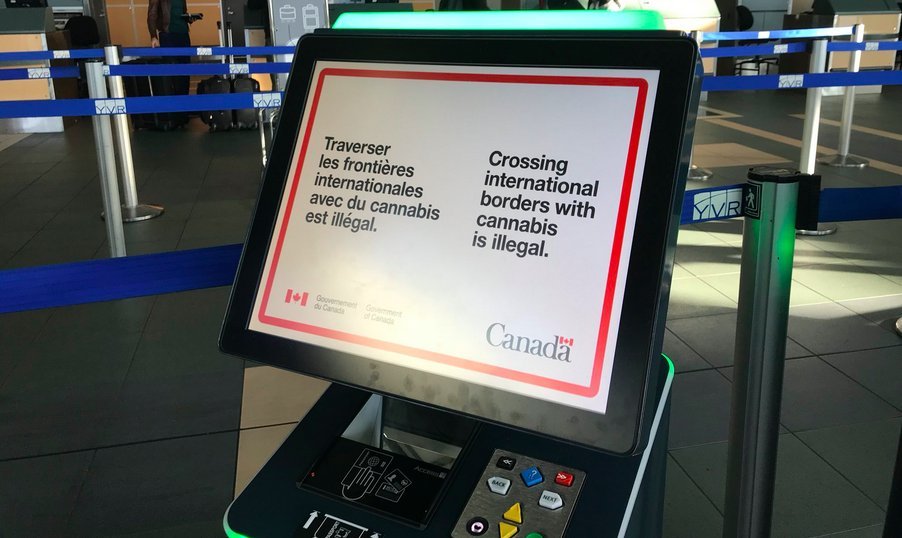There were notable omissions from the Liberal government’s announcement of their marijuana legalization. No mention was made of plans for a distribution model, whether or not edibles would be permitted, what will constitute permissible advertising, or taxes. The legalization bill contained information that was essentially considered a given before it was even released, and doesn’t consider the two most important issues that will affect producers and consumers: the eventual distribution model and taxes. Although discussing taxes is rarely fun, this isn’t the first time taxes and marijuana have made news in Canada.
Last year’s Federal Court of Appeals decision to uphold the original 2014 decision enforcing GST taxes on medical marijuana was a blow for medical marijuana proponents in Canada. Unlike most other necessary or prescribed medicines, GST will continue to be charged on marijuana sales to patients whether they source their medicine from Licensed Producers under the ACMPR or from ‘grey market’ dispensaries (whether your local dispensary chooses to adhere to this ruling is another question). So with at least GST already in place, what other taxes can we expect in 2018?
Taxes in a recreational market
With legalization looming, Canadians understand that there will be taxes imposed on a recreational market. But to what degree? GST/HST will most definitely apply to recreational customers regardless of whether or not there is a movement to repeal these taxes for medical marijuana. But what will policy makers consider when setting excise and sales taxes? There was no indication of any federal tax scheme in the recent liberal announcement.
Fortunately, this isn’t uncharted territory. With multiple states that already have years-old recreational markets—let alone the recent passing of Proposition 64in California, a state with a population larger than all of Canada—there are examples with plenty of information that can be gleaned from down south.
Marijuana taxes in the United States
In the U.S. there is the District of Columbia and eight states with legal recreational markets: Alaska, California, Colorado, Maine, Massachusetts, Nevada, Oregon, and Washington. Each area has set different tax rates to varying degrees of success. Washington and Colorado were the first to legalize in 2012 and as such provide possibly the best examples to study.
Washington began with exorbitantly high excise tax rates: 25% from producer to processor, another 25% from processor to retailer, and again 25% from retailer to purchaser. That, along with an initial inability to meet demand, drove prices to as high as around $25 dollars a gram. More recently a straight 37% tax was applied across the board – there was no segmentation of excise or sales tax.
Colorado has an excise tax rate of 15%, a marijuana sales tax of 10%, and a state sales tax of 2.9%. Like Washington they have passed new legislation and the marijuana sales tax is due to drop to 8% this July, although it’s worth noting that the Governor of Colorado has recently proposed an increase to 12% to take effect instead, to make up for a funding shortfall.
Alaska is currently unique in that a tax is charged by weight and only applied when transferred from producer to retailer or processor. It is $50 per ounce. Whether or not this remains the case in years to come is anyone’s guess, especially if it appears as though other state coffers benefit from a different tax scheme.
The Nevada tax rate is somewhat different. There are two separate tax rates for medical and recreational marijuana: a 15% wholesale excise tax applies to both and is paid by the cultivators; an additional 10% excise tax is paid by recreational consumers. Nevada supposedly collected over half a million dollars in tax revenue during the rec market’s opening weekend alone at the beginning of July. Mind you, the state will have a hard time keeping up that kind of tax revenue if it can’t solve its current supply problem.
This past November California voters approved Proposition 64 which legalized marijuana consumption and growth for anyone over 21 years of age in California. Technically the Adult Use of Marijuana Act won’t take effect until January 1st, 2018, the date by which the state of California is required to issue sales licenses to businesses. Part of the ballot includes a 15% tax on all marijuana and marijuana product purchases. There is also a $9.25 per ounce tax on flowers and $2.75 per ounce tax on leaf to all marijuana producers. Using this to calculate the actual resulting tax percent being passed on to the consumer is difficult as it will be determined by the price being charged by producers.
This tax-by-weight system we see now in Alaska and will see in the future in California is an interesting model because we’ve seen prices fall in both Washington and Oregon, which could have led to decreased tax revenue for those states (increased volume in sales makes up for any potential loss). Whereas a tax administered by production volume isn’t affected by price fluctuations.
credit:420intel.com













